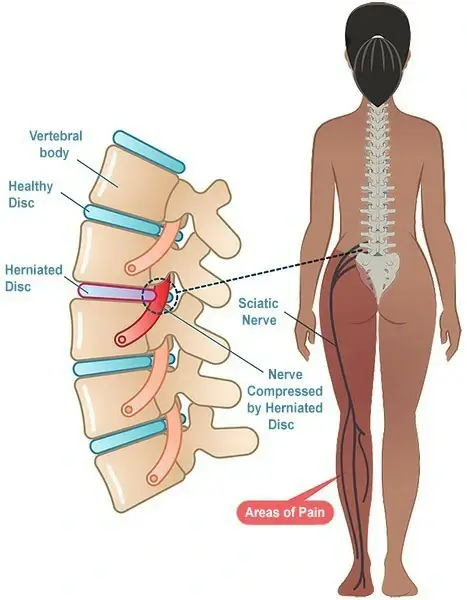Suffering is an experience that affects everyone at various times in their lives, but its intricacies often leave people feeling burdened and unsure of how to turn for alleviation. Understanding pain control and the various services and treatments available is essential for those looking for effective answers. With advancements in both traditional health care and alternative practices, there are now more options than ever to assist alleviate pain, whether it is acute or persistent.
This comprehensive manual explores the different types of pain and their management strategies, shedding light on how pain management clinics can significantly improve quality of life. From the science behind pain perception to innovative treatments like needle therapy and regenerative medicine, we will explore into integrative methods that merge therapy and medical expertise. Whether you are searching for safer alternatives to painkillers or looking for lifestyle changes to support your well-being, this article offers insightful insights into the complex world of pain management.
Comprehending Pain and Its Types
Discomfort is a intricate and subjective experience that serves as an essential alert system for the body, indicating that something may be amiss. It can be broadly categorized into a pair of main categories: acute and chronic pain. Acute pain often arises suddenly due to trauma, operation, or sickness and typically goes away with healing. In comparison, chronic discomfort persists for extended periods, often beyond the typical healing time, and may arise from disorders like arthritis or fibromyalgia. Grasping the nuances of these pain categories is crucial for effective management and treatment.

Acute pain usually has a specific cause, which allows healthcare providers to identify and address the root issue swiftly. It functions as a protective mechanism, prompting people to recede from noxious stimuli. Common examples include discomfort from a sprained ankle or post-operative discomfort. With the right treatment, acute pain can often be handled successfully, leading to a full resolution. Recognizing acute pain's transient nature is important for patients to avoid developing chronic discomfort issues.
Chronic discomfort, on the other hand, presents a distinct challenge as it can be harder to diagnose and treat. It may stem from ongoing medical issues or arise without an clear cause, leading to frustration and anxiety for those suffering. Chronic discomfort is often associated with a range of physical and psychological factors, making comprehensive management essential. Clinicians must embrace a comprehensive approach that features physical therapies, medication, and psychological support to elevate the quality of life for those dealing from chronic discomfort.
Therapeutic Strategies to Discomfort Relief
Treatment approaches to pain management encompass a multitude of approaches aimed at alleviating discomfort and improving overall quality of life. One primary approach is movement therapy, which utilizes particular exercises and modalities to enhance mobility and reduce pain in individuals suffering from conditions such as osteoarthritis or lower back pain. By applying targeted strategies, physical therapists empower patients to strengthen muscles, improve flexibility, and promote healing, thereby facilitating daily activities and fostering a better quality of life.
Another beneficial method is chiropractic care, which focuses on diagnosing and treating musculoskeletal disorders, particularly those involving the spine. Chiropractors employ manual adjustments and manipulative techniques to correct the spine, alleviate pressure on nerve roots, and enhance overall function. Many patients report substantial relief from chronic pain conditions, including migraines and nerve pain, after receiving consistent chiropractic treatments. navigate here and serves as a valuable alternative for pain relief.
In addition, mindfulness techniques such as stretching and mindfulness meditation have gained recognition for their role in pain relief. These integrative approaches not only encourage physical movement but also foster a mind-body connection that can significantly reduce stress and anxiety associated with chronic discomfort. Integrating these wellness techniques can lead to improved mental health, which in turn can diminish the perception of pain and enhance the efficacy of other pain management strategies. By combining these multiple therapeutic methods, individuals can create a comprehensive pain management plan tailored to their specific needs.
Different and Groundbreaking Pain Relief Methods
Many people are exploring alternative and creative pain relief methods that go beyond conventional medicine. One hopeful approach is the use of medical cannabis and CBD, which have gained considerable attention for their pain-relieving properties. Research has shown that cannabinoids can interact with the body's endocannabinoid system, likely reducing inflammation and alleviating chronic pain. This natural option is appealing to those seeking relief without the side effects associated with conventional pain medications.
Additionally, techniques such as acupuncture and mindfulness meditation are growing traction as complementary therapies for pain management. Acupuncture, an ancient practice rooted in Traditional Chinese Medicine, involves inserting slender needles at specific points on the body to stimulate healing and alleviate pain. Meanwhile, mindfulness and meditation develop mental resilience, allowing individuals to manage their pain more successfully by reducing stress and boosting relaxation. These methods not just address physical symptoms but also emphasize on the emotional aspects of pain.
Another innovative technique is the use of regenerative medicine, which includes therapies such as stem cell treatment and platelet-rich plasma (PRP) injections. These therapies aim to heal wounded tissues and promote natural recovery processes within the body. By utilizing the body’s own healing capabilities, regenerative medicine offers a new horizon for those enduring from chronic pain, potentially leading to significant improvements in quality of life with fewer side effects compared to conventional interventions.
